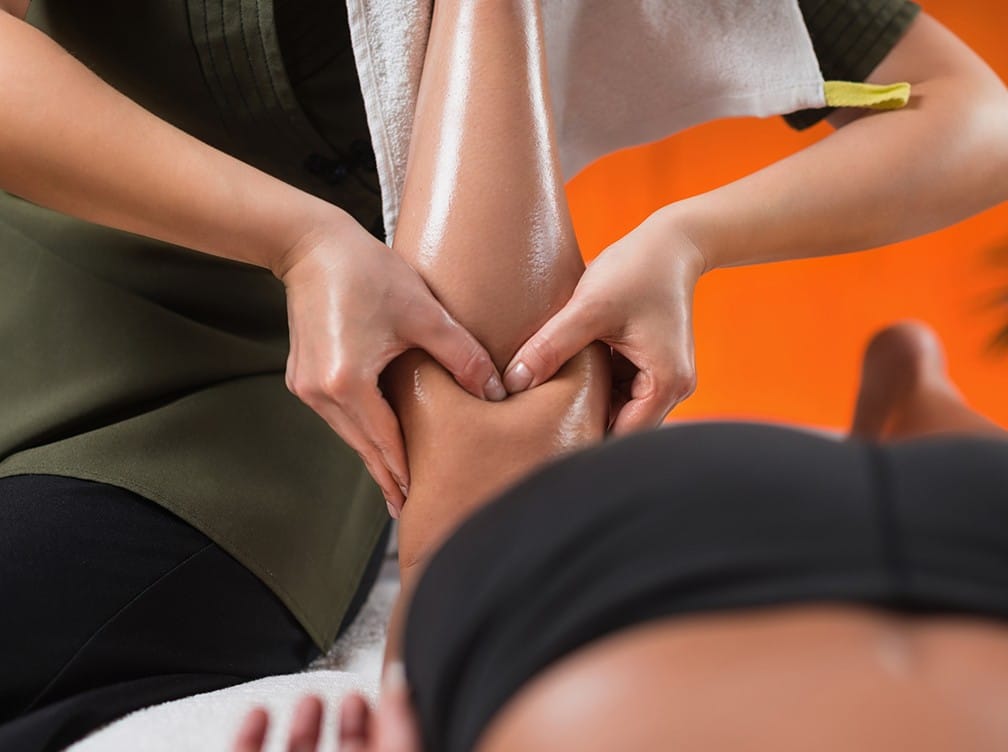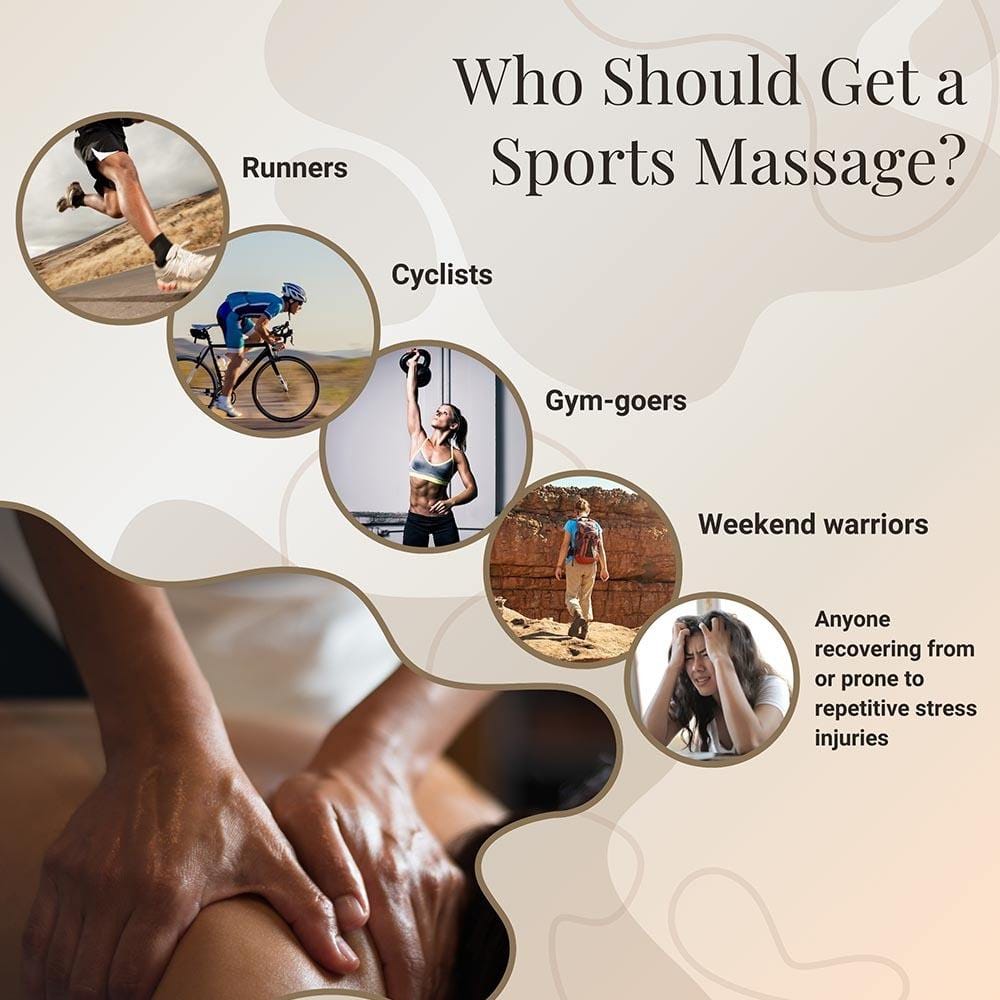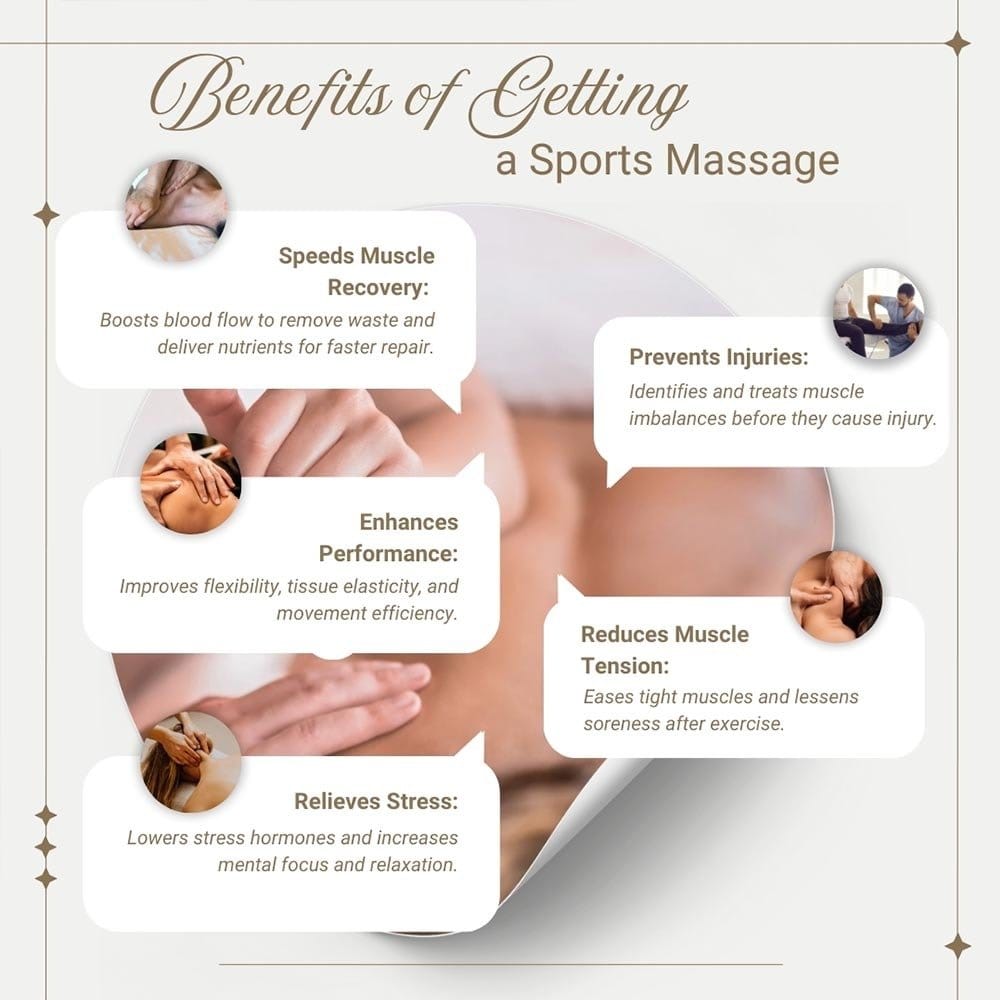Table of contents
Sports massage is a type of therapeutic treatment designed to help athletes, including runners, prevent injuries, improve performance, and recover faster. It targets the muscles that are actively engaged during athletic activity and uses techniques that lead to desired physical outcomes. At ila Only Spa you can look forward to getting the best therapy for your exhausted mind and body. Our trained physiotherapists know the right techniques to keep your muscles active and prevent injuries. They focus on your overall health and prepare your body for optimal performance.
 Sports massage is a wonderful way to support physical performance, prevent injuries, and speed up recovery for anyone engaged in regular physical activity, especially runners. The experienced therapists make athletes feel great after tough workouts or long runs as they massage their tired limbs and ease muscular pain.
Sports massage is a wonderful way to support physical performance, prevent injuries, and speed up recovery for anyone engaged in regular physical activity, especially runners. The experienced therapists make athletes feel great after tough workouts or long runs as they massage their tired limbs and ease muscular pain.
Sports massage focuses on the athletes in a wholesome manner and prepares them not only physically but also mentally to fully embrace their sporting activities. It includes a variety of different massage styles that can be used according to the athletes’ preferences and requirements.
Who Should Get a Sports Massage?
Even though it is called sports massage, it is not for professional athletes only.
It is ideal for:
- Runners
- Cyclists
- Gym-goers
- Weekend warriors
- Anyone recovering from or prone to repetitive stress injuries

Getting Started With Sports Massage
Before the massage begins, the therapist will ask you about your medical and running history, what you want to achieve from the massage, and if you have any injuries, how they occurred. They will also examine you physically and run some tests to recommend the best plan for you. This ensures the treatment caters to your body’s needs and training demands.
Benefits of Getting a Sports Massage
Sports massage offers several physical and psychological benefits, particularly to athletes and people with active lifestyles.
Some of them include:
Better Muscle Recovery
Sports massage speeds up the removal of metabolic waste like lactic acid that results from micro-tears and accumulation of metabolic waste products due to running. As the flow of blood and oxygen increases, it promotes the delivery of nutrients to the muscles, leading to quick recovery and repair.
Helps to prevent injury
With regular massage, your therapist can identify potential areas of tension or weakness within the musculoskeletal system and address them before they become injuries. Addressing these imbalances and tensions timely can help prevent the development of injuries and keep muscles, tendons, and ligaments in the best condition.
Enhances Performance
Sports massage can loosen stiff joints and improve tissue elasticity, which enhances your flexibility, reduces the impact of DOMS, and results in better performance. Timely muscle repair can have a positive impact on running efficiency and functional movement, and increase stride length and running economy.
Reduces Muscle Tension and Soreness
A good massage can ease tight muscles and reduce delayed onset muscle soreness (DOMS). It helps release the knots or the trigger points in muscle tissue that can cause pain if they are not addressed timely.
Eases Stress and Increases Mental Focus
Pressure of performing and meeting expectations can be overwhelming and lead to stress and anxiety. Massage lowers cortisol, the stress hormone, and boosts endorphins, the feel-good chemicals in the brain, promoting relaxation and mental clarity.

Feeling physically prepared to handle the pressure can enhance overall mood and boost confidence.
Does a Sports Massage Hurt?
As sports massage techniques range from gentle and relaxing to deep and intense, depending on your session goals and specific needs, some discomfort or mild pain is normal. Talk to your therapist to understand more about the pressure and comfort level, and how they can make the necessary adjustments that provide relief.
What to expect:
- Deep pressure – Sports massage targets deeper muscle layers to release tension, break up knots, and improve mobility.
- Moderate discomfort – You may feel good pain in tight or injured areas, and it may feel intense, but it should not be sharp or unbearable.
- Soreness – Mild soreness, similar to that after a good workout, is common for a few days.
What is not normal:
- Sharp, stabbing pain that you cannot bear
- Bruising unless you have sensitive skin that bruises easily
- Pain that does not go away even after a few days
While a sports massage can be uncomfortable at times, it should not be painfully intense or leave you feeling worse afterwards. The level of discomfort you will experience can depend on several factors, including your pain tolerance, the specific techniques being used, and the areas being treated.
Why Do You Feel Sore After a Sports Massage?
According to experts, the pain you experience is a product of the inflammatory experience happening at a cellular level. Deep tissue work produces this inflammatory change, and this is the reason you feel sore.
As the therapist applies firm pressure to target the underlying muscles and connective tissues, it causes micro-trauma to the muscle fibers. This creates a localized inflammatory response and stimulates the release of metabolic waste products, resulting in soreness.
When Should You Go for a Sports Massage?
The best time to get a sports massage depends on your goals, whether you plan to enhance performance, aid recovery, or prevent injury.
There are four times when regular or professional athletes might consider getting a sports massage:
- Pre-race
- Post-race
- For maintenance
- To help treat injuries
Sports massage is a great tool for runners. However, it is important to understand that if you are dealing with an injury, you should only turn to sports massage in emergency situations if you want to get back to training on track.
You can get a sports massage when you feel the need. It includes your familiarity with massage, your general recovery time with massage, and the duration of the massage itself.
Pre-Race
A pre-race massage prepares your body and muscles for performance. It is not meant to relax or go deep into muscle tissue. Instead, it is stimulating, focused, time-sensitive and performed at a brisk pace.
When you should go for a massage is up to how your body recovers. You may experience some soreness, but it is temporary and subsides within a few days, followed by a feeling of improved range of motion, reduced muscle tension, and overall well-being.
Post-Race
Post-race massage helps the body recover faster, reduces soreness, and flushes out metabolic waste like lactic acid. It is a slow, gentle-paced massage that can ease the pain from fatigued legs and minimize your chances of developing Delayed Onset Muscle Soreness (DOMS).
Having a 48-72-hour post-race massage can boost the natural recovery period and help the body settle. Timing and technique are key to availing the benefits of massage without worsening fatigue and causing further strain. An expert therapist can address muscle soreness, tension, and imbalance effectively.
For Maintenance
A maintenance sports massage is part of a long-term strategy and helps to keep your body in top shape during training. Its core purpose is to prevent injuries, enhance mobility, and balance your muscles over time to ensure you stay on track with your running goals.
Unlike the pre- and post-race sports massage, a maintenance sports massage focuses on specific elements and tissue structures that have become shortened, tight, and painful due to training. A good therapist can loosen this tightness and boost your performance in future runs, reducing the risk of injury. It focuses on keeping you mentally and physically tuned in to your body.
To Help Treat Injuries
Sports massage can help treat injuries effectively when used at the right time, using the right techniques. It is a great tool that supports healing and prevents re-injury and can be used in physiotherapy, stretching, and strength rehab for optimal results.
Massage can help with injury in the following ways:
- It breaks down scar tissue and adhesions
- It increases the flow of blood to the affected area, which promotes healing
- It restores the range of motion and increases flexibility
- It reduces compensatory tension in the surrounding muscles
- It relieves chronic pain, or stiffness
Sports massage can help you get back to full strength and mobility by reducing the recovery time. It is essential to work with a skilled therapist or sports masseuse who can customize the treatment and attend to your specific needs to provide desired outcomes.
Difference Between a Sports Massage and a Deep Tissue Massage
The difference between a sports massage and a deep tissue massage lies in their purpose, techniques, and target audience.
A deep tissue massage eases chronic muscle tension, reduces stress, relieves pain, and enhances mobility. It focuses on improving posture, promotes relaxation, and suits individuals suffering from chronic pain, muscle tension, and injuries that result from poor posture, recurring injury, and overuse.
The therapist uses slow, deep strokes and sustained pressure to reach deeper muscle layers and fascia.
On the other hand, a sports massage focuses on enhancing athletic performance, preventing and treating sports-related injuries. It helps to improve flexibility, range of motion, and muscle balance. It can reduce muscle tension and ensure faster recovery while addressing specific issues faced by athletes, such as muscle strains and tension.
Sports massage uses a mix of techniques, including effleurage, petrissage, friction, stretching, and trigger point therapy. It can be done before, during, or after sports events.
Related article: What’s The Difference Between Swedish and Deep Tissue Massage?
Important Points to Keep in Mind When Going for a Sports Massage?
- Don’t expect that you will be back to normal after one session
- Note your body’s response to massage and inform the therapist if you feel intense discomfort or pain
- If you do not notice any improvements, ask for re-evaluation and potential referral to another therapist for better results
- If you are feeling good after the massage, make sure to book a few more sessions for lasting relief
- Wear comfortable, loose-fitting clothes when going for a massage, as tight or restrictive clothing can limit the therapist’s access to specific body areas
Incorporating regular massages can play a significant role in managing performance-related stress when. They help reset the nervous system and boost mental resilience.
If you never had a sports massage before and do not know what to expect, call spa palace in NYC today. Set up an appointment with our expert massage therapist to learn what is a sports massage and if it can help you regain muscle strength and movement. With the right strokes and deep tissue work, our therapists prepare your muscles for activity and ensure long-term recovery and well-being.
